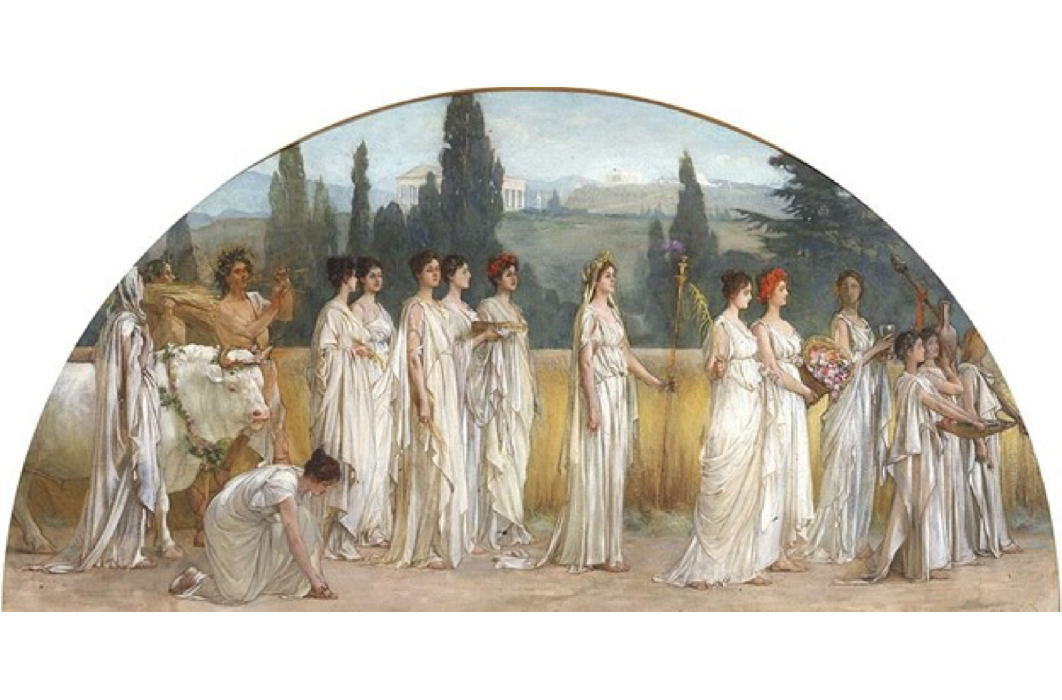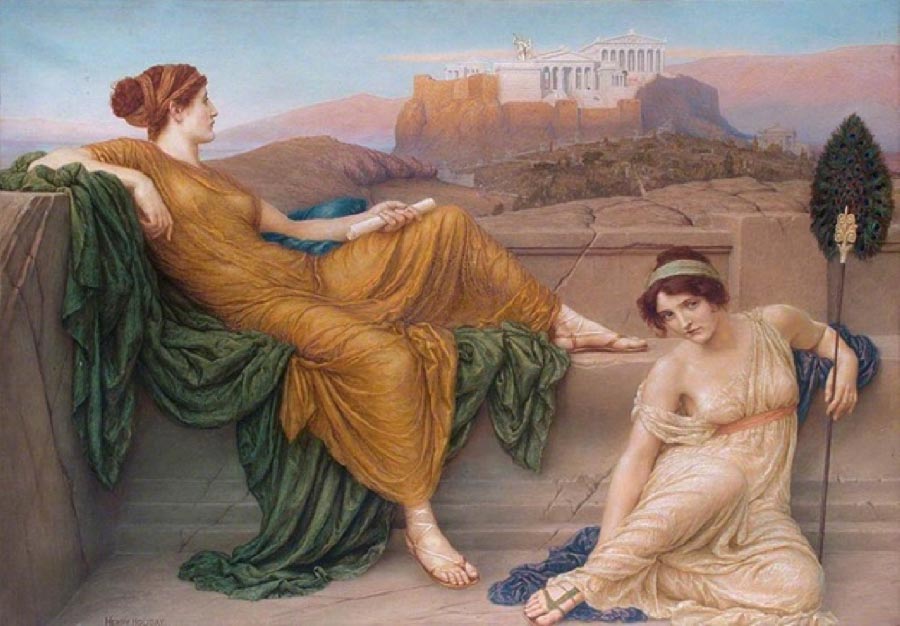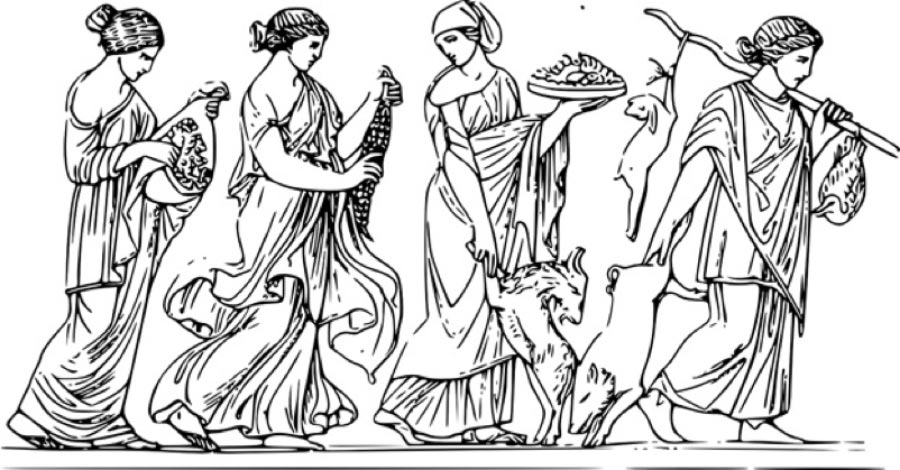
Thesmophoria: Feminine Consciousness in Ancient Greece
In the most highly anticipated religious festival of the year, women came from far and wide to gather in their cities to celebrate the Thesmophoria, the oldest and most widespread of all ancient Greek religious festivals. Comprising as many as 50 cities; it spanned from Sicily in the west to Asia Minor in the east; from Macedonia in the north to North Africa in the south. Scholars believe that its expansive nature within the Greek world is testament to its prehistoric origins. Primarily a fertility cult, the Thesmophoria ushered in the sowing season and was one of a series of fertility cults devoted to human as well as crop fertility. In Athens, it was celebrated in the month of Pyanopsion (October-November) on the 11th through the 13th in the area known as the Pnyx—a prominent hill where the general assembly of the polis met. On the second and most sacred day of the Thesmophoria, there was a cessation of certain civic functions reflecting men’s reverence for the feminine cult.

Aspasia on the Pnyx by H. Holiday (1888) (Public Domain)
Greek Citizen Wives
Why was a women’s fertility festival in hyper-patriarchal ancient Greece, given such prominence in greater society? After all, in ancient Greece women’s place was on the margins of society, away from the public sphere. Could the strict demarcation of gender roles actually serve to empower women in ancient Greece? The disciples of the Thesmophoria formed an identity around the cult, which served to promote a feminine consciousness, uncommon in the androcentric dominion of ancient Greece. Against the backdrop of extreme misogyny, men developed an esteem for the Thesmophoria.
Membership in the Thesmophoria was restricted to citizen wives, that is to say, wives of male citizens. Make no mistake, there were no female citizens in ancient Greece. Greek women married to male citizens were called citizen wives because they reproduced the ever-coveted male citizens. Further, no maidens nor female slaves were allowed to participate in the Thesmophoria. And last but not least, men were strictly prohibited from enjoying any portion of the festival. Unlike other feminine fertility festivals, women of the Thesmophoria made sacrifices (much as men did in festivals) and so used instruments of death in their ritual. Because of this and other subversive elements in the festival, men who spied on the event risked life and limb by doing so. Although typically confined to the seclusion of their domiciles, women celebrated the Thesmophoria away from their domiciles and families for a minimum of three days and three nights—noteworthy in and of itself. In Syracuse, it was celebrated for 10 days and nights.

Citizen wives preparing food in Ancient Greece (CC0)
To appreciate the significance of a feminine only cult festival garnering esteem from the entire community—including its male citizens who not only supported it but backed it financially—it is important to get a glimpse into what life was like for women in ancient Greece. To be sure, a woman’s place was in the home tending to such things as nursing children, weaving clothing and preparing food. Unless they were priestesses they could not participate in the public life of the polis in any way. Once married, not only were women confined to the domicile, but they were considered lifelong minors whose every move was directed by their husbands. Even the simple task of shopping was forbidden because women could not be entrusted with financial transactions as complicated as purchasing fruits or vegetables. Needless to say, if a woman could not be entrusted with the simple act of making change there was no question of giving them the vote in this newly democratized society. In consideration of the poor opinion men had of women, how did women’s alignment with the natural world then serve their better interests?

Gold ring from Isopata tomb, near Knossos, Crete, 1400–1500 BC. Depicted are female figures dancing among blossoming vegetation; Heraklion Archaeological Museum (CC BY-SA 3.0)




